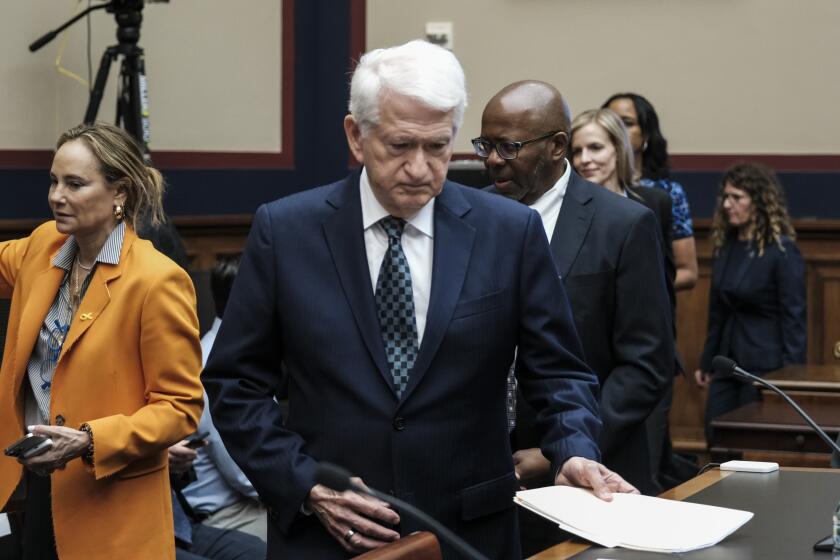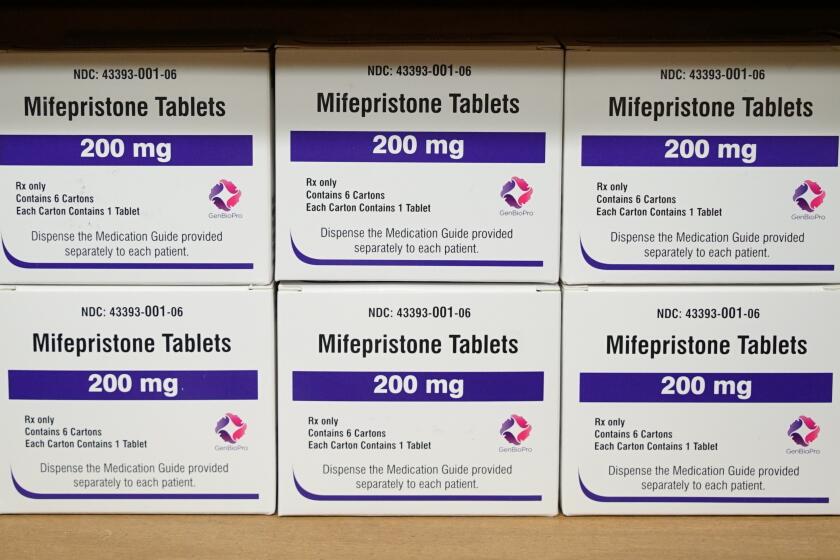THE O.J. SIMPSON MURDER TRIAL : A Streetwise Lesson for the New Yorker
When you practice street journalism, you live by the law of the street.
That’s what the New Yorker, once renowned and ridiculed for an abundance of good taste, is learning from its coverage of a story that exemplifies the mean streets of modern tabloid journalism--the O.J. Simpson trial.
For no matter how police Detective Mark Fuhrman’s $50-million lawsuit against the magazine turns out, the New Yorker and writer Jeffrey Toobin now find themselves condemned to legal battle. Not only must they face the combative L.A. cop, who once hit a photographer with a briefcase and threw him to the ground, but his scrappy, well-connected lawyer, Robert H. Tourtelot.
The lawsuit was prompted by Toobin’s New Yorker story last July that was considered a blockbuster by even the most sensationalistic hacks on the Simpson beat. He reported that “leading members of Simpson’s defense team” planned to portray Fuhrman “as a rogue cop who, rather than solving the crime, framed an innocent man” by planting a bloody glove at the mansion. Although Fuhrman said he found the glove, defense sources told Toobin that they would contend the detective spirited it away from the murder scene and planted it at Simpson’s mansion because he dislikes African Americans.
This was the New Yorker’s entrance into the high-pressure media game, where victories are measured by leaks, inside stories and pictures that reveal all.
In fact, it would be hard to reveal more about Simpson’s girlfriend, Paul Barbieri, than the New Yorker did earlier this year in a photograph by Annie Leibovitz.
Barbieri was pictured on a couch at the Chateau Marmont, a tabloid favorite ever since John Belushi died of a drug overdose there. She was wearing a cross and a shirt, which was open to a point considerably below her navel.
*
When I talked to Tourtelot on Tuesday morning, he was clearly unimpressed by the New Yorker’s 70-year-old reputation or the fame of the editor who moved it into hot journalism, Tina Brown.
Tourtelot is a 60-year-old attorney who, while he may not be familiar in the pages of the New Yorker, knows his way around L.A. courts and California politics.
Gov. Pete Wilson appointed him to the California Horse Racing Board and he serves on the Los Angeles County committee that recommends judicial appointments to the governor. He was also a pro-tem judge in the Municipal Court from 1984 to 1990 and is active in the powerful trial lawyers association.
Tourtelot promised all-out war against the magazine on behalf a client who was “absolutely blown away” by the article.
He vowed to put the defense lawyers and their detectives under oath to force them to say whether they provided Toobin with the story.
“We are going to take the deposition of every member of the defense team and their staff,” Tourtelot said. “I expect they will all deny (talking to Toobin). That will leave Mr. Toobin in a difficult position.”
Given the name recognition of the lawyers in this case, I expect that means a big news deposition war. Savaged in the media, Fuhrman may well get his revenge in the press.
Late in the morning, I walked over to the Criminal Courts Building to talk to Toobin, whom I know as a pleasant member of the Simpson press corps, dividing his time between the Simpson courtroom and the 12th-floor press room.
He is a graduate of Harvard and Harvard Law School who was assistant U.S. attorney in Brooklyn and an associate counsel for the government in the Oliver North case. He wrote a book about that experience, and has also done articles for the New Republic, the Washington Post and the Chicago Tribune, as well as the New Yorker.
Toobin said he couldn’t talk. He referred me to Maurie Perl, the magazine’s vice president for public relations. Late in the afternoon, she faxed a statement declaring that Toobin merely reported strategies that the defense team was considering. The magazine noted that Toobin had also written in the article that “the theory, while ingenious, is also monstrous.”
“The trial has thoroughly vindicated Mr. Toobin’s reporting, “ the New Yorker said. “The defense has indeed adopted the strategies he reported they would. Detective Fuhrman’s lawsuit is, we believe, without merit and the New Yorker hopes to prove that in court.”
It will be a tough fight, according to attorney Gary L. Bostwick of Santa Monica, who represented New Yorker writer Janet Malcolm in her successful defense last year of a libel suit filed by psychoanalyst Jeffrey Masson.
The law, he said, offers protection to attorneys who comment about a case “that is a matter of public interest,” a plus for the New Yorker side. And the magazine will also find legal support for its contention that Toobin was merely reporting proposed strategy. But he said these “are close calls” and that the law also offers protections to Fuhrman.
“For both sides, it will be intellectually demanding because all of these protections are difficult to apply in factual situations,” Bostwick said. “It’s a crapshoot.”
*
It’s a crapshoot that well may become a landmark, at least in the circles where journalistic practices and standards are discussed.
The New Yorker says it was just reporting strategy. But the impact of the story was far more significant, shaping public perceptions of the once-obscure detective as a man so driven by a hatred of minorities that he framed one of America’s most beloved figures.
And the New Yorker did this by allowing unnamed sources to sling poison arrows from the darkness. Unless Tourtelot is successful in finding the leaker, the informants will remain shielded. This is street journalism with a vengeance.
More to Read
Start your day right
Sign up for Essential California for news, features and recommendations from the L.A. Times and beyond in your inbox six days a week.
You may occasionally receive promotional content from the Los Angeles Times.






